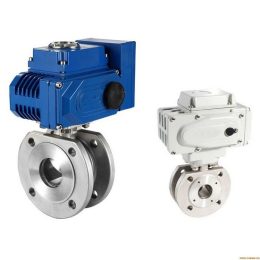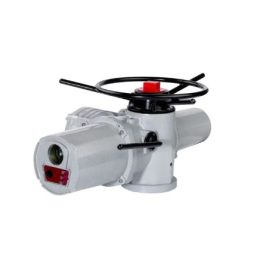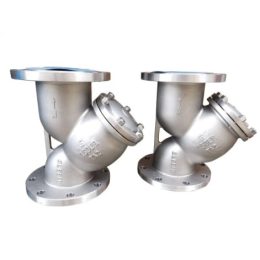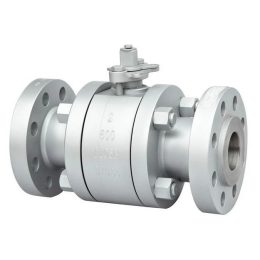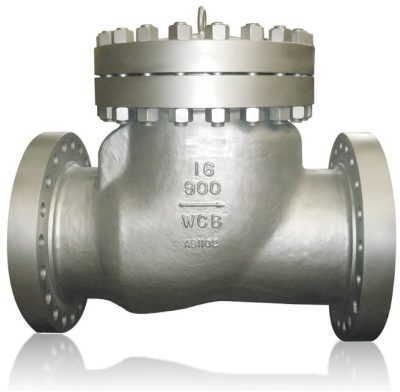
Swing Check Valve
Introductions
A Swing Check Valve, also known as a one-way valve or check valve, prevents backflow of media in a pipeline. Its opening and closing parts rely on medium flow and force to operate automatically. The streamlined flow path in the valve results in less flow resistance than a lift check valve. It is suitable for low flow, large-bore applications with infrequent flow changes. The Swing Check Valve is suited for diverse working conditions in pipelines of industries such as petroleum, chemical, pharmaceutical, fertilizer, and electric power.
The Swing Check Valve has excellent sealing properties due to its internally mounted swing check structure. All the opening and closing parts of the valve are contained inside the valve body without penetrating it, reducing the possibility of valve leakage. The valve flap has a spherical connection structure at the joints, allowing it a certain degree of freedom within a 360-degree range, with an appropriate micro position compensation.

Technical Specifications:
| Description | Specification |
|---|---|
| Sizes | NPS 2 to NPS 48 |
| Pressure Class | Class 150 to 2500 |
| Casting Materials | A105, A182 F304, F3304L, F316, F316L, A182 F51, F53, A350 LF2, LF3, LF5 |
| Other Materials | Alloy 20, Monel, Inconel, Hastelloy |
| Bore | Full or Reduced |
| End Connections | RF, RTJ, or BW |
| Bonnet Type | Bolted Cover or Pressure Seal Cover |
Design Standard
Design & manufacture according to API 6D, BS 1868
Face-to-face according to ASME B16.10
End Connection according to ASME B16.5 (RF & RTJ), ASME B16.25 (BW)
Test & inspection according to API 598
Also available per NACE MR-0175, NACE MR-0103

Advantages of Swing Check Valve
- Low pressure drop
- High flow capacity
- Tight shut-off
- Low maintenance
- Durability
- Versatility
Installations of Swing Check Valve
Swing check valves can be installed in any orientation, but it is recommended to install them in a horizontal position with the flow direction going upwards. This orientation helps to reduce the possibility of water hammer and ensures a smooth operation. Swing check valves are available in various sizes, materials, and types to suit different applications.
Quality and Safety Considerations
When selecting a swing check valve, it is essential to consider the quality and safety aspects. Ensure that the valve meets the relevant standards, such as ANSI, API, and ASTM. Other factors to consider include the valve’s pressure rating, temperature range, and corrosion resistance. It is also important to follow the manufacturer’s installation and maintenance instructions to ensure safe and efficient operation.
In conclusion, swing check valves are an excellent choice for preventing backflow in piping systems. They offer numerous benefits, including low pressure drop, high flow capacity, tight shut-off, low maintenance, durability, and versatility. Swing check valves are widely used in various industries, and they can be installed in any orientation. However, it is crucial to ensure that the valve meets the relevant quality and safety standards and to follow the manufacturer’s instructions for installation and maintenance.
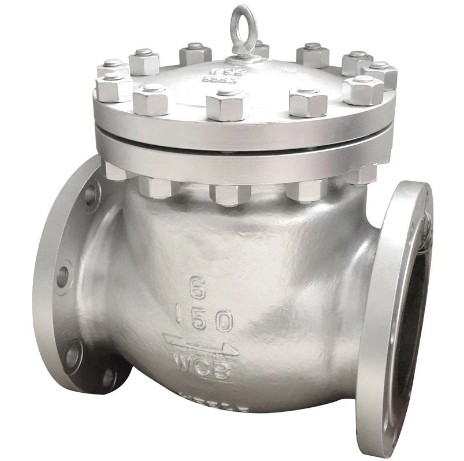
Applications of Swing Check Valve
- Water treatment plants
- Chemical processing plants
- Oil and gas refineries
- HVAC systems
- Irrigation systems
- Pumping stations
- Power plants
- Marine industry
Quality and Safety Considerations
When selecting a swing check valve, it is essential to consider the quality and safety aspects. Ensure that the valve meets the relevant standards, such as ANSI, API, and ASTM. Other factors to consider include the valve’s pressure rating, temperature range, and corrosion resistance. It is also important to follow the manufacturer’s installation and maintenance instructions to ensure safe and efficient operation.
How to Choose the Right Swing Check Valve
Choosing the right swing check valve for your application can be a daunting task. Swing check valves offer several advantages over other types of check valves, and are widely used in various industries due to their unique design and outstanding features.
When selecting a swing check valve, consider factors such as the material, size, type, pressure and temperature requirements, and quality and brand. By choosing the right swing check valve, you can ensure the safe and efficient operation of your piping system.
If you need further assistance in choosing the right swing check valve for your application or have any questions, feel free to contact us. We are always ready to help you with your valve needs.
- Different Types Of Strainers In Pipeline
- Forged Floating Ball Valve
- Six matters needing attention when choosing a regulating valve
- How Floating Ball Valves Work
- “Overview of Wedge Gate Valves: Components, Working Principle, Types, Applications, and Maintenance”
- Introduction Of Floating Pneumatic Ball Valve
